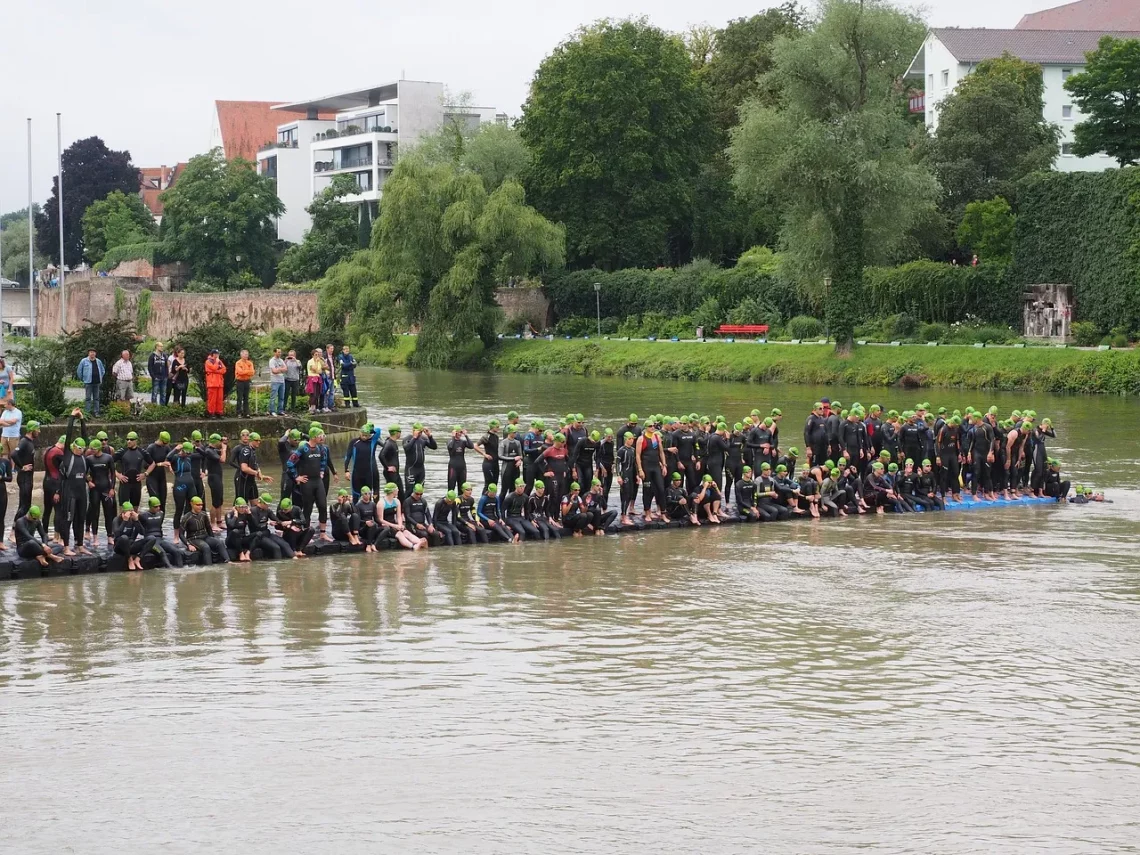
Effective Sprint Tri Training Plan for All Skill Levels
The world of triathlons has seen a surge in popularity over the years, captivating athletes of all skill levels. Sprint triathlons, in particular, have become an attractive entry point for newcomers while still presenting a challenge for seasoned competitors. This unique format combines swimming, cycling, and running into a single event, requiring a well-rounded approach to training that enhances endurance, speed, and skill across all three disciplines.
Whether you are a beginner eager to make your mark in the triathlon community or an experienced athlete looking to refine your technique, developing an effective training plan is essential. A well-structured regimen not only prepares your body for the rigors of race day but also helps to build confidence and foster a love for the sport. The key is to create a balanced schedule that incorporates the necessary elements of each discipline while allowing adequate time for recovery and adaptation.
With the right training approach, you can maximize your potential and enjoy the rewarding experience that comes with completing a sprint triathlon. Let’s delve into the essential components of an effective sprint tri training plan that caters to athletes at all levels.
Understanding the Sprint Triathlon Format
Before diving into a training plan, it’s crucial to understand the sprint triathlon format itself. A typical sprint triathlon consists of a 750-meter swim, a 20-kilometer bike ride, and a 5-kilometer run. These distances may vary slightly depending on the event, but they generally remain within this range.
The swim segment usually takes place in open water, like a lake or ocean, which can present additional challenges in terms of navigation, temperature, and waves. For beginners, mastering swimming techniques and building comfort in the water is essential. It’s advisable to practice in similar conditions to those expected on race day, focusing on breathing, stroke efficiency, and sighting.
Transitioning from swimming to biking, known as T1, is another critical part of the race. Proper training should include practicing transitions to minimize downtime. Athletes should work on quickly changing from a wet suit to biking gear, organizing their equipment efficiently, and mentally preparing for the next segment.
The biking portion is where many athletes can make up significant time. It requires both endurance and strength. Incorporating interval training, hill climbs, and long rides into your regimen will develop the necessary leg strength and stamina.
Finally, the run segment tests your endurance and ability to manage fatigue after the first two disciplines. Many athletes struggle with running post-cycling, so practicing brick workouts—where you bike and then run immediately afterward—can be beneficial for acclimatizing your legs to the transition.
Being well-versed in the sprint triathlon format helps you to tailor your training plan effectively and prepares you for the unique challenges each segment presents.
Creating a Balanced Training Schedule
A balanced training schedule is the backbone of an effective sprint triathlon training plan. It ensures that you devote adequate time to each discipline while allowing for recovery and rest days. Typically, a training plan spans 8 to 12 weeks, depending on your current fitness level and experience.
Most training schedules will incorporate three key workouts for each discipline each week: swimming, biking, and running. It’s important to vary these workouts to include endurance sessions, speed work, and technique-focused training. For instance, you might swim longer distances on one day, work on speed drills on another, and include a technique session that focuses on stroke mechanics and breathing patterns.
Additionally, brick workouts should be a staple in your training. These workouts, which involve transitioning directly from one discipline to another, are critical for simulating race conditions. A common example is biking for a set distance followed immediately by a run, helping your body adapt to the fatigue experienced during the race.
Rest and recovery are equally vital. Make sure to incorporate at least one rest day per week and consider active recovery sessions, such as yoga or light swimming, to facilitate muscle repair. Listening to your body is essential; if you feel excessive fatigue or pain, it may be necessary to adjust your schedule or take additional rest.
To track your progress, consider maintaining a training journal. Documenting your workouts, how you feel, and any improvements can provide valuable insights into your training regimen and help you make necessary adjustments.
Nutrition and Hydration Strategies
Proper nutrition and hydration are fundamental components of any effective training plan, particularly for endurance sports like triathlons. Fueling your body with the right nutrients will support your training efforts and improve your performance on race day.
First and foremost, focus on a balanced diet rich in carbohydrates, proteins, and healthy fats. Carbohydrates are crucial for providing energy during long workouts, while proteins aid in muscle recovery and repair. Healthy fats contribute to overall energy levels and help with the absorption of fat-soluble vitamins.
Hydration is equally important. Dehydration can severely impact your performance, so ensure you’re consuming adequate fluids throughout the day. During training sessions, practice your hydration strategy; determine how much fluid you need to replenish and consider electrolyte replacement, especially during longer workouts.
Pre-workout nutrition is essential to ensure you have sufficient energy for your training. A meal or snack rich in carbohydrates consumed about 30 to 60 minutes before exercising can provide the necessary fuel. Post-workout, aim to consume a combination of carbohydrates and proteins within 30 minutes to aid recovery.
On race day, stick to familiar foods and hydration strategies you’ve practiced in training. Avoid trying new foods, as this can lead to gastrointestinal distress during the event.
Ultimately, understanding your body’s nutritional needs and developing a hydration strategy tailored to your training can greatly enhance your performance and overall experience.
Preparing for Race Day
As race day approaches, your focus should shift towards preparation and mental readiness. This phase is crucial for ensuring that all your training culminates in a successful performance.
One of the most important aspects of race day preparation is familiarizing yourself with the racecourse. If possible, visit the swim, bike, and run courses ahead of time. Understanding the terrain, elevation changes, and potential obstacles will enable you to plan your race strategy effectively.
Additionally, practice your transitions during training. Knowing how to efficiently switch from swimming to biking and then from biking to running can save precious minutes during the race. Set up your transition area as you would on race day, allowing for smooth transitions.
Mental preparation is equally important. Visualization techniques can be beneficial; envision yourself successfully completing each segment of the triathlon, overcoming challenges, and crossing the finish line with confidence. This mental rehearsal helps to reduce anxiety and build self-efficacy.
On the eve of the race, prioritize rest and relaxation. Ensure you have everything packed, including your gear, nutrition, and hydration supplies. A good night’s sleep is essential for optimal performance.
Finally, remember to enjoy the experience. Completing a sprint triathlon is a significant achievement that reflects your hard work and dedication. Celebrate your progress and embrace the thrill of the race.
In conclusion, preparing for a sprint triathlon requires careful planning and execution. By understanding the format, creating a balanced training schedule, focusing on nutrition and hydration, and preparing mentally for race day, you can enhance your performance and enjoy the journey.
**Disclaimer:** This article is not intended as medical advice. Always consult with a healthcare professional before starting any new training regimen or if you have any health concerns.




